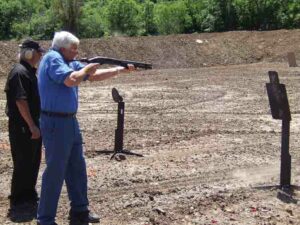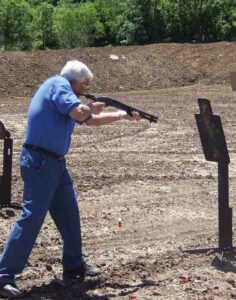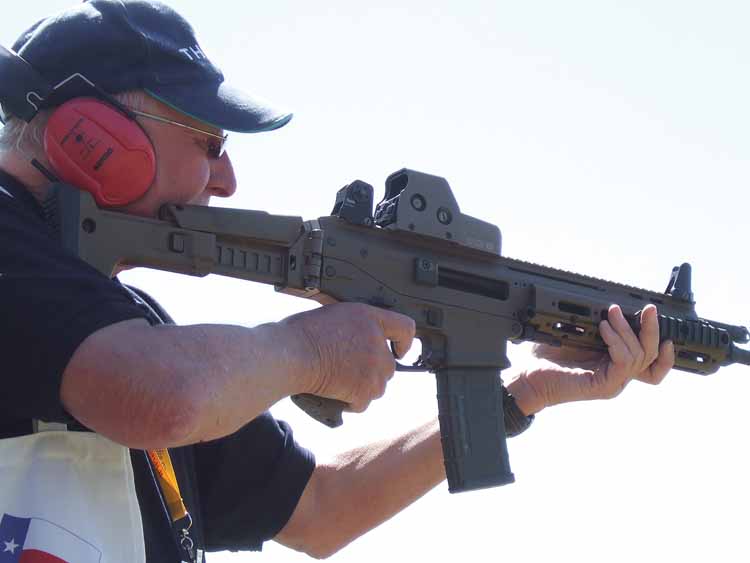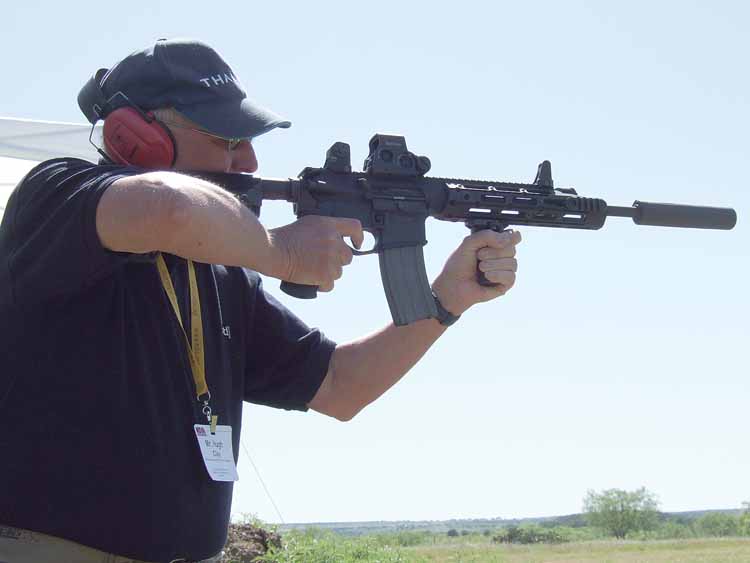In May of 2010, the annual National Defense Industrial Association’s (NDIA) Small Arms Systems Symposium was rolled into a new format joining forces with NDIA’s Guns & Missiles Division to host the first ever NDIA Joint Armaments Conference. The Dallas, Texas Hyatt Hotel was packed full of Industry and Government personnel all anticipating a full schedule of academic papers and an exhibit hall loaded with new gear. Some of the hot topics this year included the growing debate surrounding 5.56mm ammunition effectiveness and new information concerning the Army’s carbine solicitation. Vendors and presenters were well rounded and included everyone and everything from the usual American suspects as well as participants from the EU, Asian Pacific Region, and even China.
Goings on in Government
A main feature of any NDIA small arms event is the plethora of interaction between government and industry personnel with this year being no different. Embodying this concept were the keynote speakers: Major General Brogan of USMC Systems Command (SYSCOM) and BG Fuller of the US Army, Program Executive Officer, PEO Soldier. The generals were not ill prepared or poorly informed as to what the crowd was there to hear and pointedly addressed some of the hottest and most contentious topics in the industry – carbine and ammunition performance – which MG Brogan referred to as a “significant and emotional event in the U.S. military.”

The USMC
MG Brogan outlined the small arms vision currently held by the USMC that includes continued fielding of the M16A4/M4/M4A1 platform with many officers now being issued M4 carbines in lieu of the traditional M9 9mm pistol as necessitated by current hostilities. He also touched on several key decisions including:
- The USMC selection of the HK416 to fulfill the Infantry Automatic Rifle requirement in Infantry Squads and LAV units as the M27 IAR.
- Selection of the Army’s M110 Semi-Automatic Sniper System (SASS) as the Marine Corps’ Long Range Precision Rifle.
- Large scale fielding of the MK 318 Mod 0, 5.56mm SOST ammunition, amongst USMC fighting units deployed in Afghanistan.
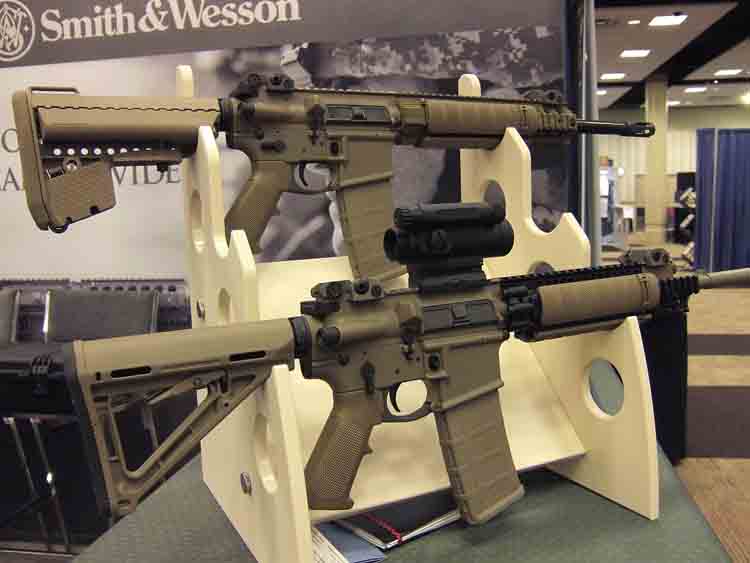
More enlightening were MG Brogan’s key questions to industry relating to both small arms and ammunition; questions that attest to the keen awareness and sensitivity such issues are viewed with. “Should we buy (in the future) an individual weapon or a family of weapons?” He further gave a suggestion that such a family could use a common platform allowing for PDW, Carbine, Combat Assault Rifle, Service Rifle, SDM, and IAR configurations. In the ammunition realm his questions were similar, “Is the current caliber effective?” Brogan continued by adding a potent caveat: “I can assure you there are many enemy combatants that can attest to the effectiveness of it.” Brogan then laid out a simple methodology should a new caliber be considered. He said, “If we are going to consider changing caliber the technology must be equal,” referring to the fact that comparisons have been made of alternate calibers (i.e. 6.8 SPC, 6.5 Grendel, etc.) to new technology 5.56mm rounds, including MK318 SOST and the Army’s M855A1. MG Brogan clearly understands that these comparisons do not accurately compare “apples to apples” so to speak and as a result any truly effective data in the raging caliber debate will only occur when all calibers are tested utilizing the same design technology (e.g. M855A1 vs. 6.8mm SPC utilizing the same bullet technology). Brogan’s formula for ammunition considerations: weight versus effect on the enemy versus ammunition expended.
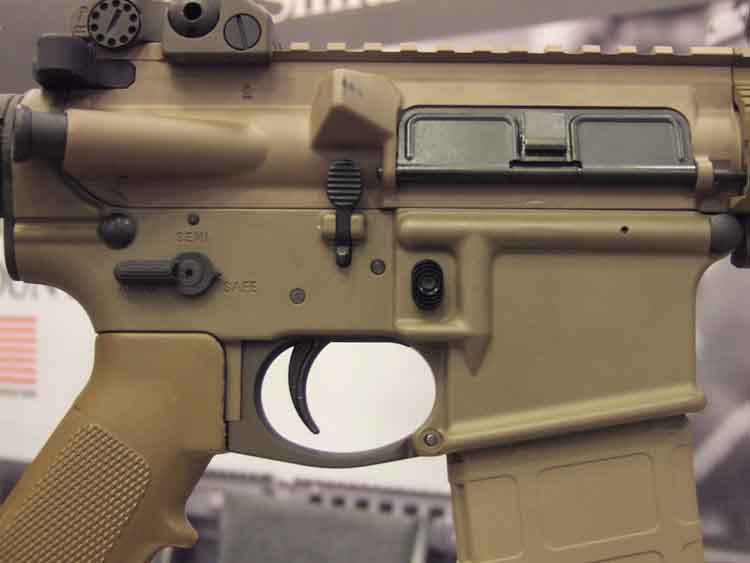
Other notable information relayed during the brief included:
- Any future individual weapon contract will include provisions giving the government full ownership of the Technical Data Package (TDP) or full use rights.
- Any future weapons and ammunition must be compliant with the laws of land warfare.
- Weight savings are a must.
A presentation shortly thereafter by LTC Brinkman of USMC SYSCOM/Infantry Weapons further reinforced the points made by MG Brogan while praising current successful fieldings like the M32 Multi-Shot Grenade Launcher and the light weight infantry mortar system. On the horizon in the USMC’s future as outlined by Brinkman: more foreign weapons training kits, a long range sniper rifle, light weight machine gun, and a close quarter battle pistol (though details are lacking at this time).
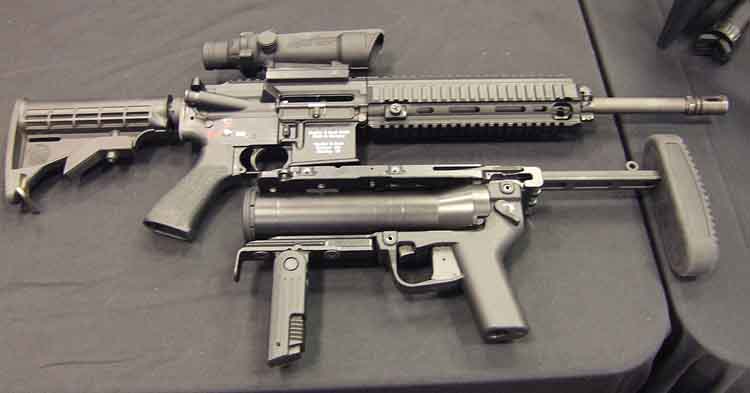
The Army
As the largest service and often the traditional purchasing agent for other services, the Army also had a wealth of information in their briefing sessions. This year was no different with BG Fuller, PEO Soldier, detailing the Army’s ever changing small arms acquisition strategy. The Army’s small arms vision has completely transformed in a short period of time from “pure fleeting” M4s just two years ago to a dual path model meant to substantially upgrade the current issue M4 platform while paving the way for a full and open source carbine competition. BG Fuller expounded on details to eager industry personnel and echoed the sentiments of beleaguered Soldiers across the globe when he acknowledged, “The Soldier is not a Christmas tree that we can keep hanging items on,” bucking the trend of the past decade to keep adding kit and equipment to the basic soldier load.
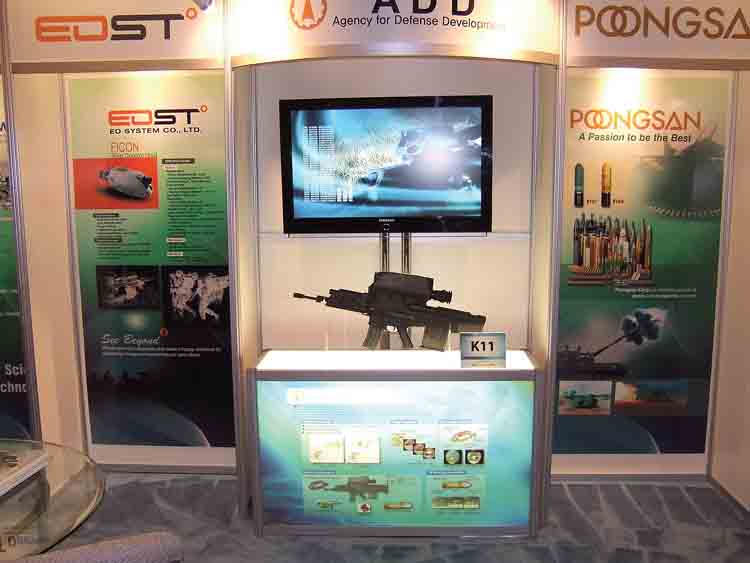
The highlight topic of course was the update on the long awaited carbine solicitation. Since the past 2009 NDIA Small Arms Systems Symposium, the debate surrounding the carbine issue has not faded and events like the intense battle at COP Keating in Afghanistan, mimicking the Wanat engagement less than a year earlier, have further driven forward movement in an effort to get real time improvements into the field. The battles highlighted again the need for higher rates of fire and die hard reliability in individual weapons for U.S. troops engaged in close quarter running firefights with Taliban and other insurgent fighters. These considerations among others were significant influences leading to the dual path strategy where the Army will improve the M4 carbine while soliciting its replacement. The Army is seeking to address the M4 improvements in phases:
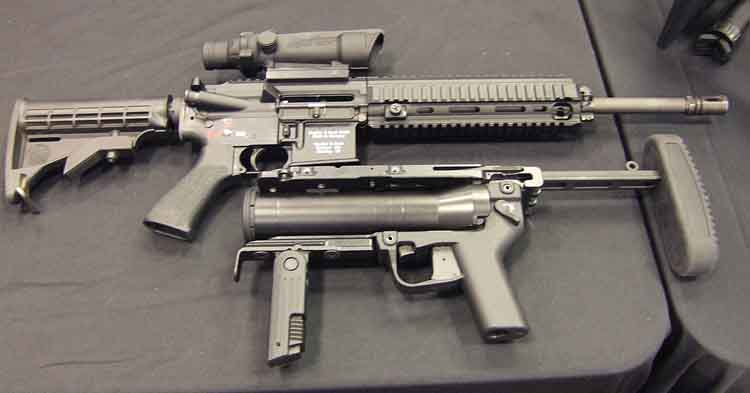
Phase I
* Increase the barrel mass for better performance during high rates of fire.
* Ambidextrous Safety/Selector tailoring the ergonomics to an even larger percentage of users.
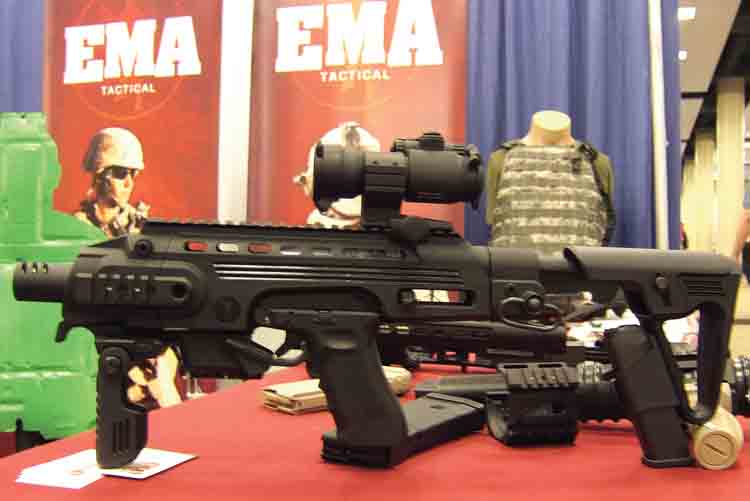
Phase II
* Add an enhanced M1913 type rail adapter system to the platform. Most likely the new rail will be of the free floating type to negate operator influences on the barrel achieving a consistent point of projectile impact.
Phase III
* Explore improved operating systems to include short stroke gas piston mechanisms and a redesigned bolt carrier and bolt group with the goal of improving overall weapon reliability.
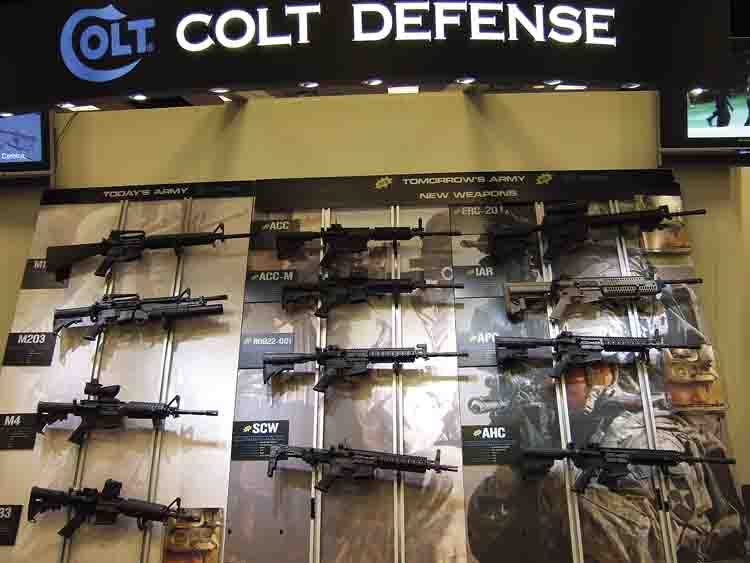
Furthermore, the introduction of the improved 5.56mm M855A1 round into service in June 2010 should mean that the “improved” carbine will be quite a potent platform, especially since M855A1is optimized for the M4 carbine and not the M16 and provides consistent terminal effects through a large variety of barriers. Fuller was cautious to add that the M4 improvement program must be managed carefully and the options well considered warning that, “we can’t spend the same amount on an improvement that we would spend to buy a new one.”
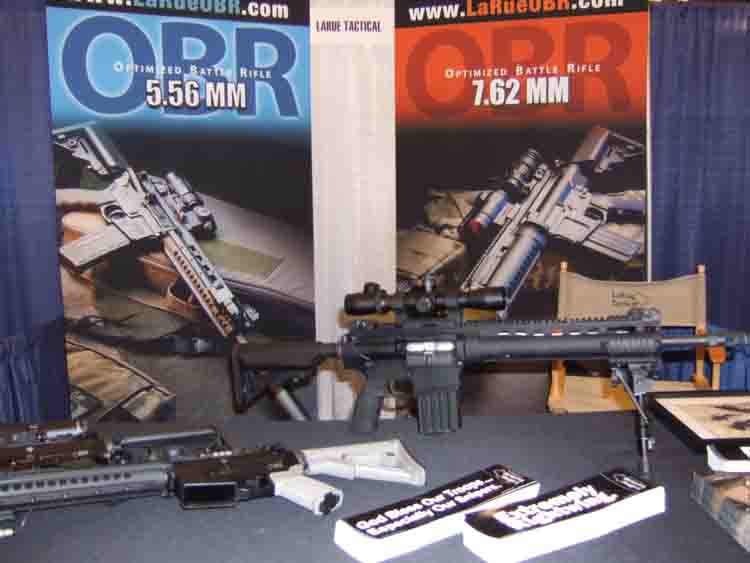
As far as the solicitation for a new replacement carbine, the going has been slow, but is advancing. As of the time of Fuller’s brief the carbine requirement was in the Joint Staff, but the industry RFP will likely be released before this article is in print. The step following is full and open competition for the Army’s new individual carbine. This competition will be historic in nature and unprecedented in recent Army history. When walking the showroom floor at this year’s event it was not at all difficult to see that this is what all of the industry’s major players are gearing up for.
Follow on presentations by LTC Henthorn at the U.S. Army Maneuver Center for Excellence (MCE- formerly the Infantry Center) and COL Douglas Tamilio, PM Soldier Weapons, were consistent with details given by Fuller. Henthorn took the time to expound more on current and soon to be fielding efforts on the Army radar:
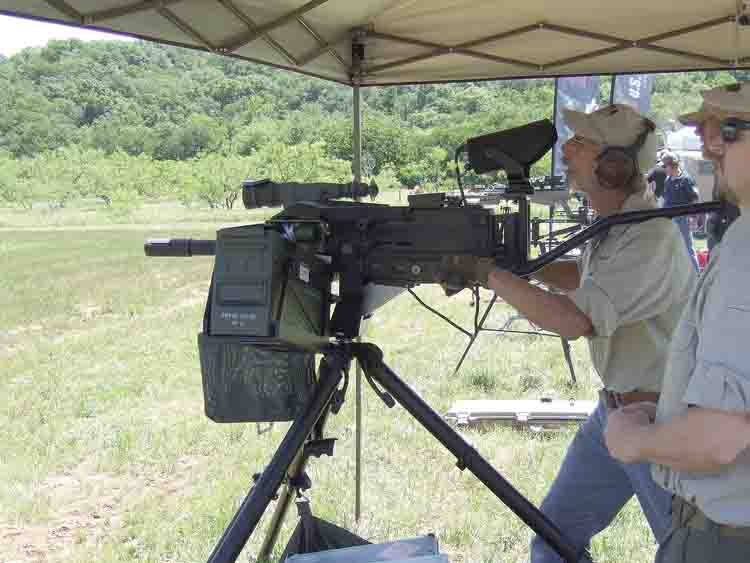
Current Fielding Efforts
* The M110 Semi-Automatic Sniper System (SASS) is now 85% fielded to units. Some early issues with the guns have been resolved and combat surveys show acceptance and approval of the SASS by end users and commanders.
* The M320 Grenade Launcher (HK GLM) is rapidly replacing M203s among the conventional force and will soon be integrated with a day/night range finding sight.
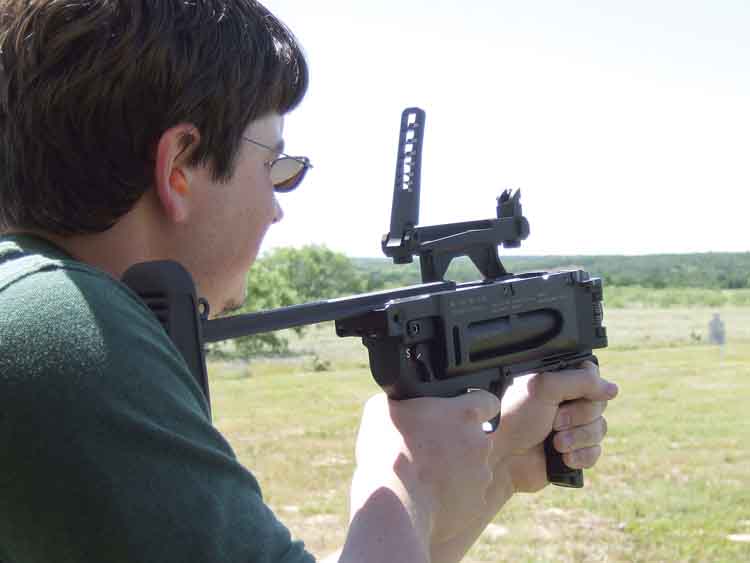
Coming Soon to Units This Year
* The M2A1 enhanced .50 BMG machine gun with quick change barrel and fixed headspace/timing.
* The upgraded M24 Sniper Rifle chambered in .300 Winchester Magnum.
* The M240L light weight machine gun with titanium receiver, (See SAR’s 2009 NDIA Small Arms Symposium article for information on this system).
* The M855A1 improved 5.56mm round (lead free and eco friendly).
Among items Henthorn sees the Army eyeing in the future are suppressors and a sub-compact rifle.
A last note worth mentioning before closing the Army section of this article is a survey conducted in Afghanistan by PM Soldier Weapons. As briefed by the Army at his event, PM Soldier Weapons personnel spent time on the ground with units in Afghanistan evaluating how the everyday dirty boot war fighter employs his weapon system, what shortfalls could be noted, and of course what is being done well. A most interesting find is there seems to be a trend among troops to incorporate substantial amounts of aftermarket equipment into their individual weapon’s configuration, particularly the M4. It is commonplace to find non-standard stocks, grips, optics, and especially magazines integrated into the basic kit of our warfighters. This sparks an interesting and fiery debate between those who believe that troops should have the freedom to select superior commercial off-the-shelf (COTS) equipment and the official “by the book” stance of Army regulations, which requires the issuance of modified weapons orders (MWOs) and numerous tests and certifications to authorize a piece of weapon related equipment. The tone of this debate could not be clearer than the warning issued to the industry during the brief by COL Tamilio that industry suppliers who provide non-standard equipment could be encouraging Commanders and Troops to violate AR750-10, which could be detrimental to their careers.
Concern is justifiable since some sub-standard equipment was clearly being used by Soldiers who may have not been fully informed about the products they were using. It is clear, however, that troops in the field will continue to integrate innovative aftermarket solutions often contrary to the rules. The goal of the military and industry alike should be to ensure that these fighting men and women can fight with the best top quality gear without fear of reprisal. Aftermarket and non-standard pieces of equipment are often superior and it is commendable that one priority for PM Soldier Weapons is to develop a menu of authorized aftermarket items for carbines. This will be challenging to do fairly; until then, troops will continue to weigh the risks and rewards of the practice.
The Other Services
Some highlights occurring in the other armed services were also briefed as follows. U.S. Navy (CDR Tom Gajewski, USN) elaborated the Navy’s need for a .50 caliber remote weapons station to protect ships from terrorist attacks while in port. This system must possess corrosion resistant properties as expected for maritime use.
U.S. Air Force (Mr. Randy Roth, USAF Combat Arms Program) reported that the Air Force is supporting broader government efforts to include the solicitation of a new individual carbine and selection of a precision sniper rifle (PSR). Numerous equipment transitions are taking place in the service to include: replacement of the M203 40mm grenade launcher with the M320, replacement of the M2 .50 cal. with the M2A1 QCB, and transition of some M14 EBRs and M4 carbines to the MK17 and MK16 SCAR variants.
U.S. Coast Guard (Capt. Michael Price, USCG Office of Specialized Capabilities) noted that the USCG is looking into acquisition of a Precision Service Shotgun (PSS) with a rifled barrel optimized for firing slugs to disable outboard marine motors and the service is still seeking a gyro stabilized marine enhanced weapons platform to take the place of manned guns on the bows of high speed watercraft with the goal of enhancing gunner safety during operations. Due to a lack of training facilities, the Coast Guard is exploring options for effective simulators specific to the P229 DAK handgun.
Awards and Achievements
With previous coverage in SAR, there is no need to go into great detail, but it is only fitting to profile the well deserving men who received recognition at this year’s Joint Armaments Conference for their hard work and dedication in the small arms field.
Chinn Award Recipient
Mr. Frank Puzycki, U.S. Army ARDEC.
* Over 40 years in the small arms community.
* Key mover and shaker within the National Small Arms Center.
* Personally involved with seventeen ammo type classifications and 13 weapon type classifications.
* Quote: “Team work is indefensible. When Industry and Government are working together good things happen. When we’re doing this we can’t be beat.”

Hathcock Award Recipient
Mr. Jeff Hoffman, Black Hills Ammunition, founder/owner
* Began an active law enforcement career in 1979 and continues to this day.
* At 50 years of age and as head of a well established company, Hoffman is still subject to SWAT call outs.
* Black Hills Ammunition is renowned for quality in the precision marksmanship community to include MK262 Mod 0 and Mod 1 types.
* Quote: “People at the plant know to never tell Jeff ‘We can’t do that.'”

Professional Service Award Recipient
Mr. Hays Parks, DoD General Counsel
* A Vietnam veteran, having entered service with the USMC in 1963.
* Has fought numerous battles as a lawyer to prevent radical restrictions of lawful military ammunition types used by U.S. Forces.
* Has been a champion for the warfighter on the international scene facilitating the approval of new ammunition types for military use.
* Renowned debunker of misinterpretations and deliberate misrepresentations of small arms ammunition related treaties, agreements, and revisionist history.
* Quote: “The most important client I have is the Soldier, Sailor, Airman, or Marine.”

Papers and Exhibits
The NDIA Joint Armaments Conference sported a very high rate of participation from outside of the United States and a large number of vendors due to the combined nature of the Conference. With over a 100 vendors on the floor presenting products ranging from tasers to tank guns, it was largely impossible to cover every aspect in the time allotted, but for a small arms guy there were definitely some products that caught the eye including some new systems largely unseen beforehand.
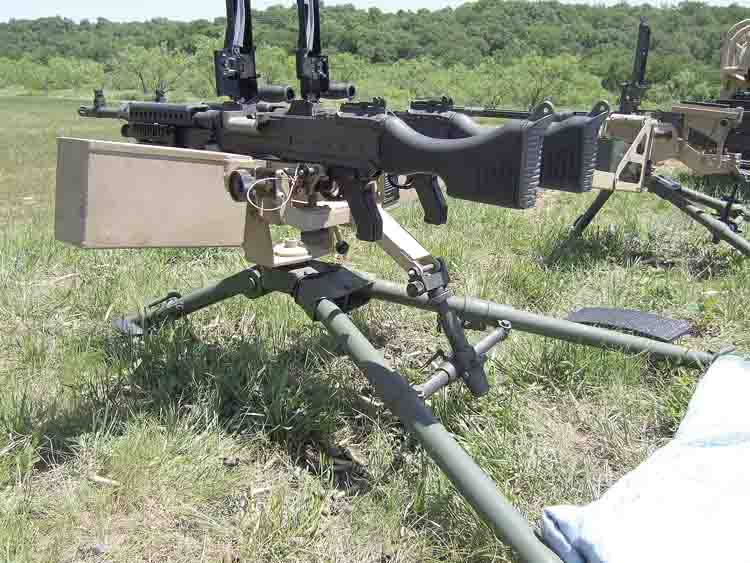
Domestic
Among domestic U.S. vendors in the exhibit hall, Remington Defense was attracting a lot of attention, not only with the Gen 7 variant of the Adaptive Combat Rifle (ACR), but also with the new Remington Gas Piston Rifle (RGP). While the ACR is becoming a regular feature of these events (beginning life as Magpul’s Masada), the rifle has seen many evolutions since the base design was introduced. In the Gen 7 configuration, which eyes the military and defense markets, the polymer receiver had been replaced by an improved magnesium receiver (which I have been assured does not burn, at least not easily) and a Remington octagonal rail system. “ACR is not our original design,” Remington’s Trevor Shaw noted, “but we’ve made improvements.” On the other hand, the RGP is truly a floor up design and much more than a simple conversion of the standard AR-15 type platform. Though the ins and outs of the rifle were not fully accessible to this writer due to the system’s newness, the quality of the build was readily apparent upon inspection. The RGP features a completely monolithic upper receiver with the recognizable Remington octagonal rail design containing modular attachment points. The rifle does not have any advanced coatings as of yet, but even without it Shaw assuredly states the initial tests are very promising both in terms of accuracy and reliability. Even better to both the government and commercial consumer is the strategy behind the gun as described by Shaw, “We are looking for high reliability and quality at a good price point. We want to make the gun as affordable as possible.” Other notable features of the gun include a regulating gas system for suppressor use, ambidextrous controls, a beefed up barrel extension designed for multi-caliber applications, and upper receiver compatibility with the standard AR-15/M16/M4 lower. The RGP will certainly evolve as time passes, but the base system viewed at this event is exciting and this writer is very enthusiastic to follow the RGP’s progress. Undoubtedly Remington Defense is well postured for the Army’s upcoming carbine solicitation and M4 improvement program with strong designs in both the AR-15 and non-AR-15 configuration.
Smith and Wesson has also been hard at work under the law of supply and demand developing rifle designs geared towards the Army’s requirement. At their booth, Joe Bergeron took the time to highlight some of the company’s recent work to the AR-15/M4 system (S&W’s M&P rifle line) including the addition of fully ambidextrous controls (including the bolt release) and the integration of new “in-house” barrel technology that yields greatly extended barrel life, though due to the proprietary nature of the technology and the ongoing status of testing, no exact numbers were readily given for this article. Smith and Wesson’s rifle line includes both short stroke gas piston and direct gas impingement rifles, and of course, all uppers are compatible with the current issue M16/M4 lower receiver. Furthermore, the gas piston version of the S&W rifle allows for multiple settings for suppressor use that also includes a complete gas shut-off option. Other notable S&W developments are the introduction of Coyote Tan slides and Titanium rust resistant sights for the M&P pistol line as well as ongoing suppressor work and testing in 9mm, .40 S&W, and .45 ACP.
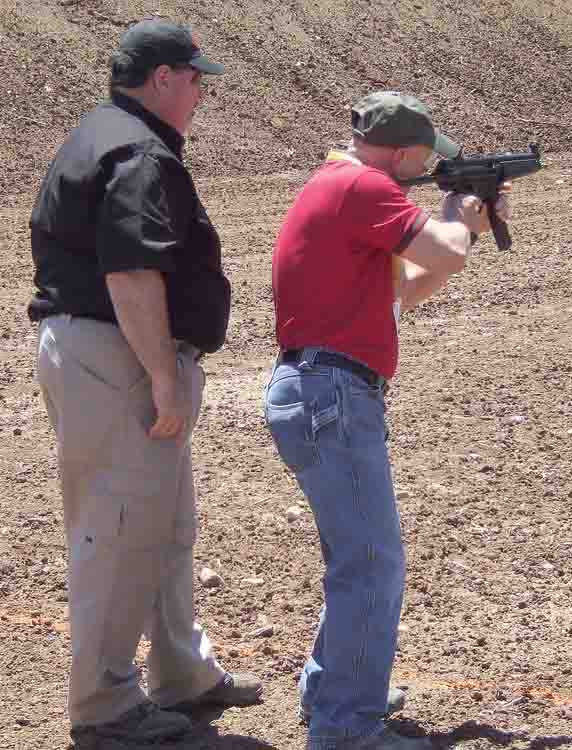
Heckler & Koch’s Dale Bohner was enthused to show off the company’s products. HK has seen lots of good news in the past couple of years with the selection and delivery of the M320 40mm grenade launcher to replace the Army’s aging M203s and now the recent choice by the USMC to field the HK416 as the M27 Infantry Automatic Rifle. So far, HK has delivered over 20,000 M320 grenade launchers to the Army and deliveries are continuing. The USMC’s IAR has yet to enter full rate production; according to Bohner, “We’ll deliver a quantity by November this year.” Attesting to the design quality of the original HK416, who’s legacy has become well known both due to outstanding performance and its place among the never ending carbine controversy, the M27 IAR in its final form is nothing more than an HK416 with a bayonet lug and bipod. The HK hammer forged barrel, proven in quality and longevity, coupled with the 416’s short stroke gas piston operating system is believed by many to be the combination that gave the HK system the edge needed to meet the USMC’s IAR requirement. It should be noted that the IAR will augment, not replace the USMC’s M249 SAW fleet, with the SAW being retained in most units and for vehicle use. In the meantime Bohner is optimistic, “As soon as a decision is made regarding to full rate production we can proceed.”
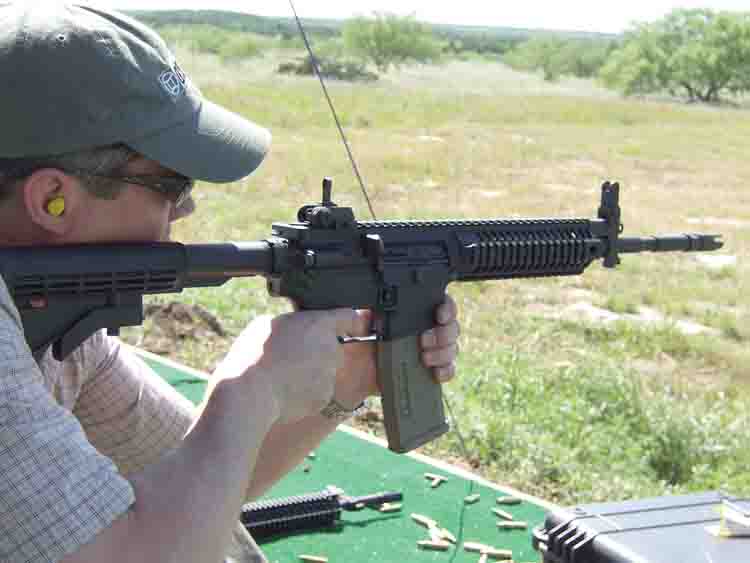
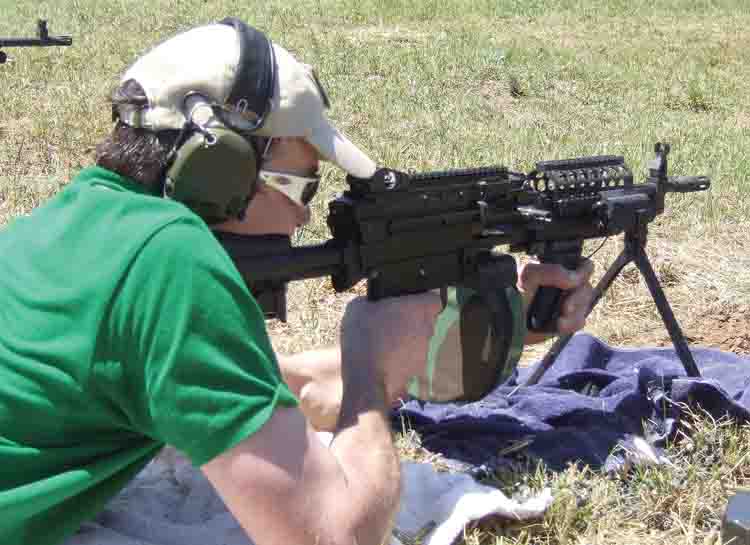
From the Foreign Fields
The NDIA Joint Armaments Conference was clearly global in scale this year as international issues and non-U.S. participants took the spotlight position in many of the presented academic papers and featured exhibits. Notable presenters focused on the NATO role in weapons and ammo solicitation and standardization, with some pretty contentious moments. Also worthy of comment was the presentation and exhibit of the Republic of South Korea’s new K11 Advanced Individual Weapon System (albeit with some U.S. Customs mishaps) and participation from the Chinese engineering team who provided a briefing on the 40 years of successful employment of the Type QLZ87 35mm grenade launcher and the system’s evolution in the Chinese infantry formation.
The NATO related paper topics this year focused, as with earlier papers, on the shortcomings of the 5.56mm SS109 type round being currently deployed in hostilities in Afghanistan. During his sessions, Mr. Anthony Williams of the U.K. championed the idea of evaluating a medium or optimal caliber solution that meets the needs of 5.56mm and 7.62mm users, citing difficulties with 5.56mm effectiveness at longer ranges and through intermediate barriers as experienced by British Troops serving with ISAF. Another presentation by Mr. Jim Schatz had a similar approach and made credible arguments in these budget strained times for a collaborative effort developing the next generation of individual weapons by NATO partners.
Daewoo’s K11 would have been quite a star at this show providing it had made it. Ju Hwan-Song of S&T Daewoo explained in broken English just enough to figure out that U.S. Customs had become a road block to having the actual K11 system present on the showroom floor and as a result a life sized cardboard cutout served as a space filler for the real thing. Despite this mishap, the K11 booth was intriguing and the merits of the platform and its ground breaking novelty was not diminished. The K11 is a “dual barreled weapon system” and vaguely resembles the U.S. OICW prototypes from the late 90s and turn of the century. The K11 features a 5.56mm carbine, 20mm bolt action rifle that fires 20mm airbursting smart munitions, and a sophisticated fire control system (FCS) all integrated into a single man portable individual weapon. The system is very similar in concept to the XM25 Airbursting weapon system being tested in limited field trials by the U.S. Army; the difference that Ju Hwan-Song proudly pointed out is that K11 has been fielded in mass ahead of U.S. system. The K11 replaces the ROK Army organic K201 rifle and under barrel 40mm grenade launcher; two of which are found in the typical infantry squad. The K11’s FCS allows for optical aiming of the carbine using a dual day/night IR based system that projects a digital image to the operator. The FCS also integrates a laser range finder and advanced ballistic computer that accounts for environmental effects when programming airburst ranges for the 20mm projectiles, making the K11 an effective counter-defilade weapon that is simplistic to use. As far as mechanics goes, the K11 uses modern alloys in the upper portion of the weapon with a polymer lower making it possible for the system to weigh in at a portable 6.1 kg (13.45 pounds). Ergonomically, the weapon utilizes one trigger pack and selector with the operator rotating the selector between safe, semi-auto, burst, and 20mm options with a single fluid motion. Magazine capacity for the system is five 20mm airbursting projectiles and the standard NATO type 30-round 5.56mm magazine.
At the Range
One legacy event of the NDIA Small Arms System Symposiums is the annual Firepower Demonstration where vendors get the golden opportunity to put their products into the hands of attendees and let rounds fly downrange. The Joint Armaments Conference continued the tradition with an excellent demonstration out at the Spartan Tactical range facility managed by owner Jim Smith and his staff of professional cadre. The predictions of thunderstorms and flash flooding that were rumored throughout the first two conference days, and seemed even more imminent on the day of, gave way to clear blue skies and the Texas sun. Over twenty vendors were on site showcasing everything from pistols, sniper rifles, and even truck mounted .50 cal. machine guns on three different ranges optimized for the systems being fired thereon.
At the pistol range, vendors included HK with a full suite of handguns and submachine guns, Glock, Inc. with the Gen 4 enhanced .40 caliber pistol and Ruag Ammotec with their frangible ammo line. The line was especially long for EMA Tactical where Eldad Oz (EMA’s president) and Mr. Michael Grundy could not keep the magazines loaded fast enough to satisfy the crowd waiting to fire the Roni pistol conversion kit for the Glock 17 handgun. The Roni (Hebrew for rejoice/rejoicing, but also the name of the designer, Moshe Oz’s daughter), which has seen multiple product improvements just since the SHOT Show in January, allows for the standard Glock 17 to be converted without modification into a semiautomatic shoulder fired weapon system; and when cradling a Glock 18 the Roni takes the form of a true submachine gun. The Roni delivers impressive accuracy in a small package with an integrated M1913 rail allowing for the mounting of any compatible optical devices and a sturdy sliding shoulder stock. As Grundy explained, the Roni conversion allows agencies the flexibility of fielding only a standard service pistol yet gives users the ability to achieve pistol caliber carbine/submachine gun performance. There has already been interest from across the global and domestic spectrum, with one undisclosed school system viewing the conversion as a means for better equipping school security officers to quickly respond to a Columbine type of scenario. The Roni is envisioned as a tool negating the need to secure a separate weapon on the campus premises or in a patrol cruiser, which delays response time when an incident occurs. Better yet for those who read this as a civilian, the Roni conversion kit is BATFE approved and can be mailed to your doorstep. (Introducing a pistol into the conversion, or the mere possession of the two together, can still be viewed as possessing an SBR. All NFA rules apply).
A trek past the main range and up the hill leads to Spartan’s long distance range where light machine guns, carbines, DMR rifles, and sniper systems stood ready to receive shooters. At this range vendors included La Rue Tactical, SIG, Colt Defense, HK (with the HK416 IAR variant and HK416 in 6.8mm), and Remington Defense with their new RGP rifle and Generation 7 ACR. The lines at this range gave testimony to the enthusiasm of the crowd which endured equatorial type heat to get hands on the new weapon systems. For HK, company President Wayne Webber joined Dale Bohner in assisting attendees to firing positions to fire the IAR while Remington’s Trevor Shaw stayed busy with the RGP carbine at the far right. Despite its geographical disadvantage of being located separately from the main range area by a required uphill walk through rough terrain, the long distance range was the busiest per capita at the Firepower Demonstration, likely due to the relevance of the products highlighted there.
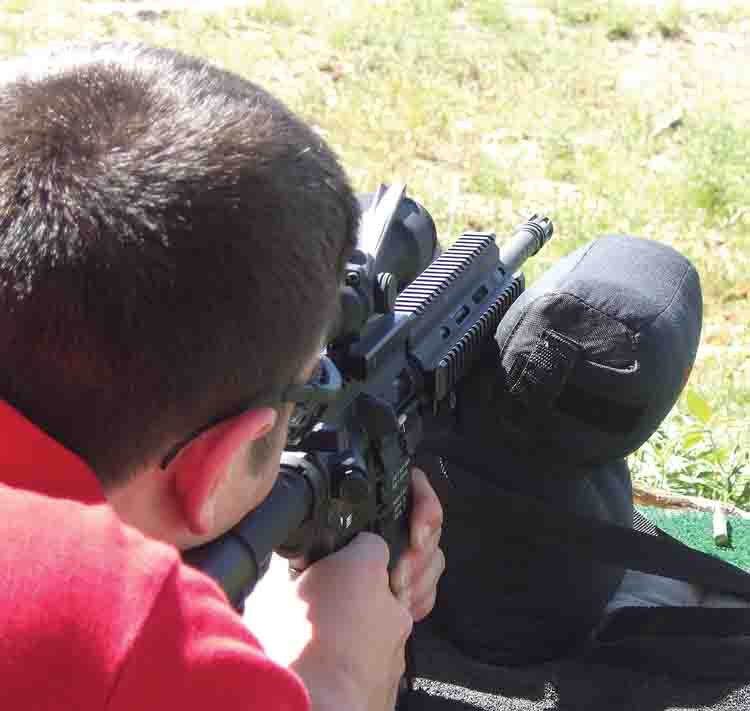
Down at the main range facility, fifteen vendors lined the firing points, with plenty of steel and La Rue targets on the horizon. The firing line contained everything from FNH’s SCAR rifles on the far left (SOCOM has announced a decision not to field the Mk16 SCAR Light since the NDIA event), to the GUA-21 .50 cal. machine gun on towable trailer on the far right. Sandwiched in between were a plethora of vendors with a very diverse product range to include: Dr. John Kokinis of U.S. Machine Gun Armory with his semiautomatic variant of the Mk46 light machine gun, Aloysius Donovan with the Adams Arms short stroke gas piston carbine, Milkor with the M32 multi-shot 40mm grenade launcher, and LTC (Ret) Mark Westrom with ArmaLite’s AR-15 rifles. To discuss each participating company and their wares would be far too intensive for this article. To say the least, the NDIA Firepower Demo does stand as unique for small arms trade shows inside the United States with its interactive vendor demonstrations and personal one-on-one range interactions. It is commendable to NDIA that they have continuously hosted this event without incident for many years.

(A debt of gratitude is due to Mr. Sal Fanelli and Jim Schatz who, for many years running, have volunteered their time, resources, and sweat to making the Firepower Demonstration both safe and successful. Also a special thanks to LaRue Tactical, whose mobile BBQ trailer provided the large crowd with traditional Texas cuisine at the best price in town… free.)

Conclusion
With so much going on in the world, the changing winds of politics, and the inevitable cutting of defense budgets, the fact still remains that troops in the war zone need the best small arms and ammunition available. With all of these obstacles it is organizations like NDIA and events like the Joint Armaments Conference that can make the difference by consolidating the cutting edge products and the great minds that develop and employ them under one roof for three days that impact the rest of the year. From military units and government agencies that send their subject matter experts to top engineers and scientists from home and abroad, the Joint Armaments Conference is an event where business cards and email addresses are exchanged, where new ideas are birthed, and focus is honed on the path ahead for the sake of the warfighters that put their lives on the line daily in the service of their country, wherever that may be.
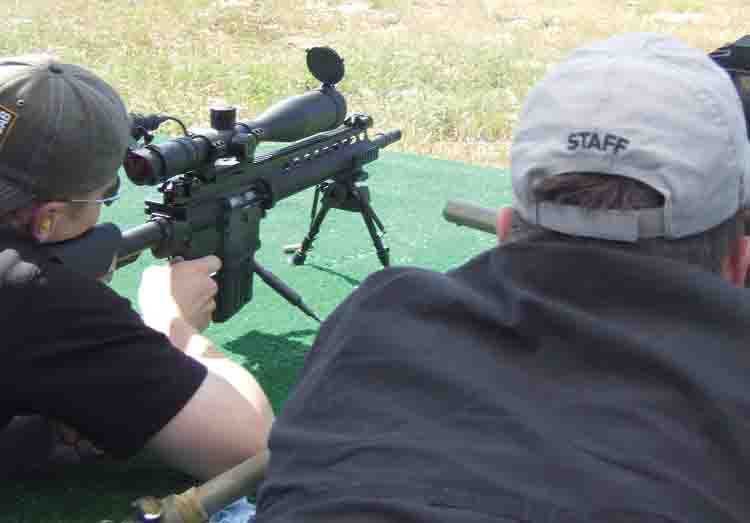
| This article first appeared in Small Arms Review V14N8 (May 2011) |




